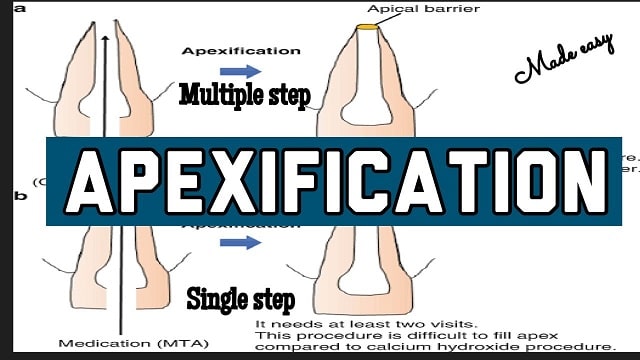Apexification is a procedure performed on immature teeth (not yet fully formed) that are infected due to trauma to close the open apex so that the tooth can heal. The trauma in question can be a broken tooth due to being hit.
It should be noted that trauma to young immature teeth is very susceptible to occur, both in adults and children. Where the condition of immature tooth trauma with an open apical can cause inflammation of the pulp or pulp necrosis. It should be noted that pulp is a connective tissue consisting of cells, basic substances, and fibers. Meanwhile, pulp necrosis is a condition of tissue death in the pulp, which is tissue located in the deepest layer of the tooth.
Imperfect root formation can cause the root canal to widen with thin walls, making the teeth brittle. This is the reason why the apexification method is needed, to treat and overcome dental problems.
Benefits of Apexification
The benefits of this procedure cannot be underestimated. Because, in addition to saving natural teeth from extraction, there are several other benefits of apexification, namely:
- Prevents external infection to the root, once the barrier is successfully placed. As a result, the chances of germs and infection reaching the fine canal are zero. Interestingly, this can also prevent further inflammation or bleeding.
- Maintaining the natural appearance of teeth, so that a person can chew food comfortably and keep their original teeth for the rest of their life.
- Helps protect other teeth. Because apexification can help to save the remaining teeth from damage.
- With proper and successful treatment, you can keep your teeth and continue eating the foods you enjoy.
Purpose of Apexification
This method aims to stimulate cells in the periapical area of the tooth to form a dentin-like substance above the apex. Both improve the long-term prognosis for tooth formation above the root canal alone. In addition, apexification also aims to remove pulp tissue inside the tooth and disinfect the root canal system. Some of these goals can be achieved in two ways, namely:
- As a long-term procedure using calcium hydroxide dressings, to allow the formation of a biological hard tissue barrier.
- As a short-term procedure.
When to Perform Apexification
Apexification needs to be done when someone experiences trauma to young immature teeth. This aims to prevent the condition of the teeth from causing infection while maintaining the teeth in their arch.
Apexification Procedure
For the procedure, the doctor will first open access to the pulp chamber. It should be noted that the pulp chamber is a hollow space located in the body or crown of the tooth. Then, the doctor will do several things such as:
- Cleaning the root canal with irrigation and filing. At this time the doctor will also repeatedly use sodium hypochlorite, which can help remove debris that has formed.
- Next, the doctor will seal the apex, with a paste of a mixture of mineral trioxide aggregate. The paste will then be placed on the open apex using mineral trioxide aggregate (MTA). This aims to completely close the tooth canal.
After the apexification procedure, it is important to check the healing apically, through radiographic examination. Be sure to do this examination six months after the procedure. The success rate of apexification is usually high, but there are situations where the infection does not resolve.
In some cases, the resorption process (a condition related to physiological or pathological processes that result in the loss of dentin) continues. As a result, some cases that cannot be completely resolved through apexification may require surgical intervention or complete tooth extraction.
A place to Perform Apexification
Apexification can be done in a hospital that has a dental polyclinic, or a dental clinic. Well, if you have questions about apexification, you should immediately contact a doctor.

